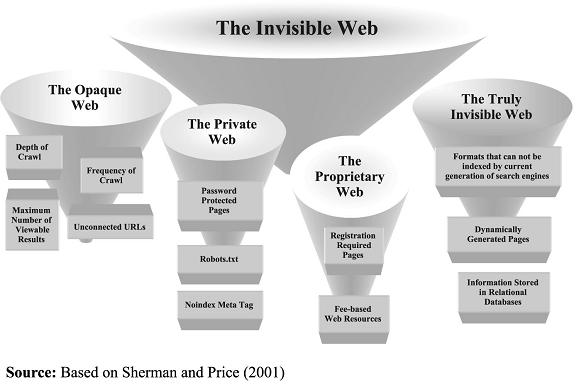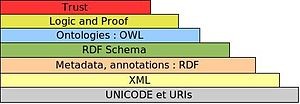The regular series of Panda updates have sent across the message to all SEOs that if you neglect the quality aspect of content then Google is going to neglect your site and deprive you of the search presence that you are trying to gain by optimizing your site for search engines.
But, this has put forward a misconception that if you focus on content the rest will be taken care of. When Google introduced the PageRank and gave importance to links the whole focus was shifted to getting links and gave rise to the link spam and a bad reputation for the SEO industry. Similarly now people think that if we regularly go on adding content the SEO is taken care of. This can result into a content spam which again will need some update stronger than a Panda update.
Link building was never SEO and neither content creation and its sharing should be considered as SEO. Content has been king since the first page was published on the web. It is 2012 that Google’s algorithms were capable of identifying quality content to a great extent and hence penalized low quality and thin content. Your website or blog is a container and the container is safeguarded or valued because of the content inside it.
SEO and content marketing are two different industries. Your SEO may or may not create content for you and at the same time your content creator or writer may or may not optimize your site. No doubt that every piece of quality content gives a boost to your search presence provided your site has been optimized wisely for the search engines and the search engines can easily index and extract the right context of the content to make it prominently visible on the search results for their users.
SEO makes the site capable of being indexed and SEO is that unbalanced force which sets the ball rolling and gives it an initial speed. The push of the regular quality content converts the speed to velocity and acceleration. Yes the right content gives it a direction which converts the scalar quantity of the initial speed to the vector quantity by giving it the right direction.
The content cannot get a direction and go far if it does not have the potential for the initial speed which is determined by the SEO of the site.
The SEO activity can be categorized as follows:
On Page Factors:
- Title Tags
- Description Tags
- Suggestions for landing pages to make them more effective
- Work on the site architecture and navigation
- Image optimization
- Making the maximum benefit from videos on the site
- Header Tags
- Working on the content to ensure that it falls in the category of quality content
Off Page Factors and Quality Web Presence:
- Integrating Social Media
- Guiding the in house staff on how to use social media effectively to establish trust and authority
- Guidance on how to develop a blog and maintain it
- Improve on the quality of existing inbound links to the site by working on the details about the domain authority, Anchor Text and the relevant linked pages from the external site.
- Work on cleaning the link profile of non topical links.
Local Search
- Add the details to Google Places and Google Maps
- Integrate the Google Places account with the Google+ Business Page
- Suggest methods by which you can encourage customers to write reviews
- Optimize for Local intent keywords for organic search
Other Technical Factors:
- Set the canonical issues
- Robots.txt
- XML Sitemaps
- Add Structured Data in the form of Microformats and Microdata wherever applicable on the site
- Customize 404 (Page Not Found) Page
- Work on Improving the Site Speed
- Add Authorship Markup to the blog
- Add Twitter Cards and FaceBook open Graph meta tags to the blog
- Guide the web developer to implement microformats or schemas for products and reviews.
The content of the site can reap rich dividends only if the above mentioned aspects are taken care of. Content Marketing or content creation and sharing is not the new SEO but undoubtedly it is an essential strategy to future proof your search engine presence.
All content creators may not be good SEOs and all SEOs may not be good content creators. These are two separate industries supplementing each other qualitatively.
If we value our industry and want to establish the true identity of the SEO industry, I think we should not propagate content marketing as the new SEO just like in the past some SEOs propagated Link Building to be SEO and brought a bad name for the industry. A Content creator needs to have knowledge about the concerned industry for which you want to create content but a SEO needs to have knowledge about the search engines , their algorithms , updates, webmaster tools, analytics,etc.
If your site is not optimized for search engines then it is like a body at rest in the invisible web. When you optimize the site it becomes capable of getting the search presence and is displaced from the invisible web to the search engine index and gathers speed. The regular quality content and sharing give it a direction and it gathers velocity and further acceleration to reach the targeted destination.













 To generate leads and drive traffic to the website is the major SEO objective for companies investing in SEO. But the objective of driving traffic to website has gone down by 8% in 2012 since last year.
To generate leads and drive traffic to the website is the major SEO objective for companies investing in SEO. But the objective of driving traffic to website has gone down by 8% in 2012 since last year.

 Though the companies having a budget of $1 to $25000 has gone down by 7% in 2012 as compared to last year , the companies allocating a budget of $25000 to $75000 has gone up by 9% in 2012. There is a 4% increase in the no. of companies allocating a budget of more than $3 million too. This again is a positive trend that companies are willing to allocate higher budgets for SEO.
Though the companies having a budget of $1 to $25000 has gone down by 7% in 2012 as compared to last year , the companies allocating a budget of $25000 to $75000 has gone up by 9% in 2012. There is a 4% increase in the no. of companies allocating a budget of more than $3 million too. This again is a positive trend that companies are willing to allocate higher budgets for SEO.
 Glad to see that there are more companies willing to hire SEO specialists rather than SEO agencies. This again proves that SEO is a specialized service which needs to be implemented by individuals or small close knit and like minded teams for better results.
Glad to see that there are more companies willing to hire SEO specialists rather than SEO agencies. This again proves that SEO is a specialized service which needs to be implemented by individuals or small close knit and like minded teams for better results.
 Measuring the ROI from SEO seems to be still at the helm for the challenges faced for managing SEO. This problem will be automatically solved when the metrics to measure SEO is decided upon by the company. This will be a continuing trend though, because the total ROI from SEO can never be measured as the ROI from SEO is an ongoing thing. This is because the brand and reputation created by SEO makes the company accrue returns in future. Many times the targeted traffic which visits the site as a result of SEO services may not take any immediate decision for buying or contacting the company but may delay the decision for various reasons.
Measuring the ROI from SEO seems to be still at the helm for the challenges faced for managing SEO. This problem will be automatically solved when the metrics to measure SEO is decided upon by the company. This will be a continuing trend though, because the total ROI from SEO can never be measured as the ROI from SEO is an ongoing thing. This is because the brand and reputation created by SEO makes the company accrue returns in future. Many times the targeted traffic which visits the site as a result of SEO services may not take any immediate decision for buying or contacting the company but may delay the decision for various reasons.









